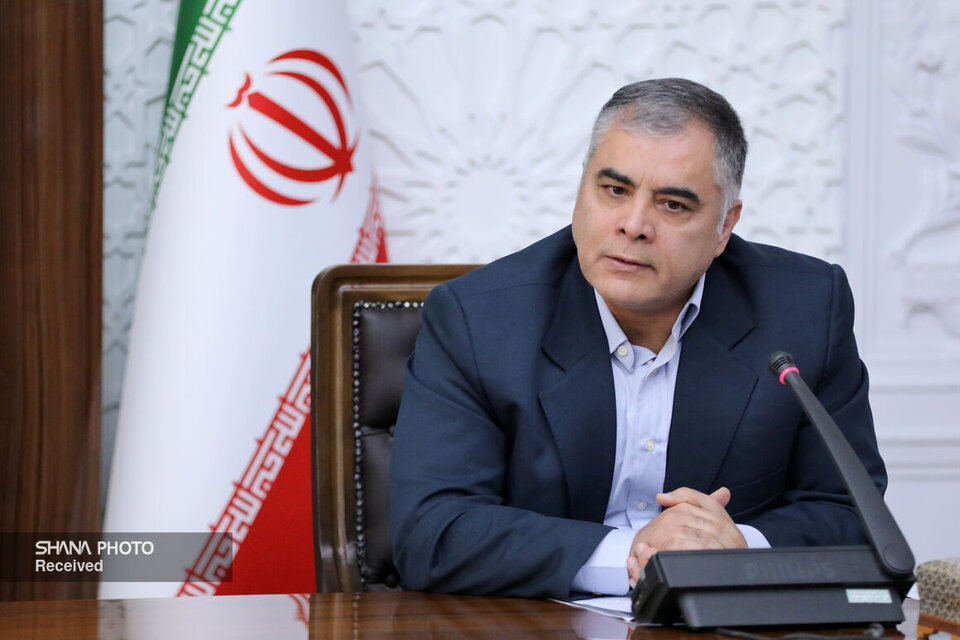Oil Minister Mohsen Paknejad said Saturday that when the current administration took office last September, the country’s gas recovery capacity was about 330 million cubic feet per day. Over the past year, an additional 280 million cubic feet per day has been added, a figure expected to exceed 600 million cubic feet by the end of this [Iranian] year.
Speaking at the inauguration of the NGL 3100 project in Ilam Province, Paknejad said the facility is one of the largest flare-gas recovery projects in the country. He praised President Masoud Pezeshkian for attending the event and said the project fulfills a long-standing goal of capturing associated gas in the region.
According to Iran’s Seventh Development Plan, flare-gas recovery capacity must reach 16 billion cubic meters per year — about 44 million cubic meters per day — by the plan’s end in 2028. Paknejad said the Oil Ministry has made expanding this capacity one of its top priorities.
Private sector role
Over the past year, about 60 million cubic feet of flare gas per day has been captured through short-term projects involving auctions and private-sector sales, he said. A new auction covering nine packages with a combined capacity of about 270 million cubic feet per day has also been held. Another round will soon be announced for 36 packages with a capacity of 700 million cubic feet per day, offered at a base price of zero to encourage competition.
Long-term projects
The minister said long-term plans include the construction of NGL 3100, NGL 3200, Kharg NGL, and associated gas collection stations in Bidboland and Marun, as well as flare reduction programs in the 12 refineries of the South Pars Gas Complex. All projects are expected to be completed in phases by 2028.
In the past year, the startup of Rag Sefid-1, the recovery of surplus gas in Gachsaran, and flare-reduction measures in South Pars refineries added about 140 million cubic feet per day in recovery capacity. With Saturday’s launch of NGL 3100, another 80 million cubic feet per day has been added in its first phase.
Details of NGL 3100
The Ilam project is designed to recover 240 million cubic feet per day of associated gas from fields in southern Ilam and Dehloran. It includes the NGL 3100 complex, two compressor stations, a 100-megawatt power plant, and more than 350 kilometers of pipelines.
Initially, it will recover 80 million cubic feet per day, ramping up to full capacity in phases. The recovered rich gas will be processed at NGL 3100 to produce lean gas, C2+ liquids such as ethane and heavier hydrocarbons, sulfur, and other condensates.
Paknejad said more than 150 million cubic feet per day of lean gas will be fed into the national grid, while heavier fractions will be sent by pipeline to NGL 3200 in Khuzestan and from there to the Bandar Imam Petrochemical Complex. Once the Dehloran petrochemical plant becomes operational, its feedstock will also come from this project.
The plant’s 100-megawatt power unit will supply about 30 megawatts to the national grid, helping stabilize electricity in the region.
Investment, benefits
The project required about $1.6 billion in investment, resulting in the shutdown of eight flare stacks and preventing the burning of associated gas worth more than $700 million annually. About 85% of the equipment was domestically manufactured.
The construction phase created over 4,500 jobs, while 1,500 permanent and 3,000 indirect jobs are expected during operation.
Paknejad called the project a symbol of national self-reliance, maximum use of local capacity, and a major step toward safeguarding national wealth, strengthening the economy, and protecting the environment.
He said the goal is to eliminate gas flaring entirely by 2028.


Your Comment